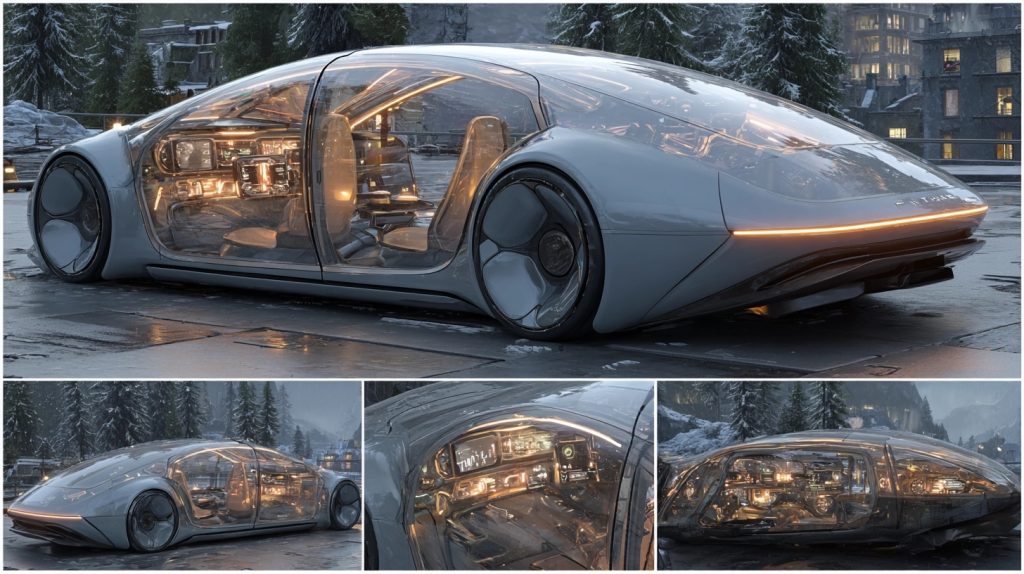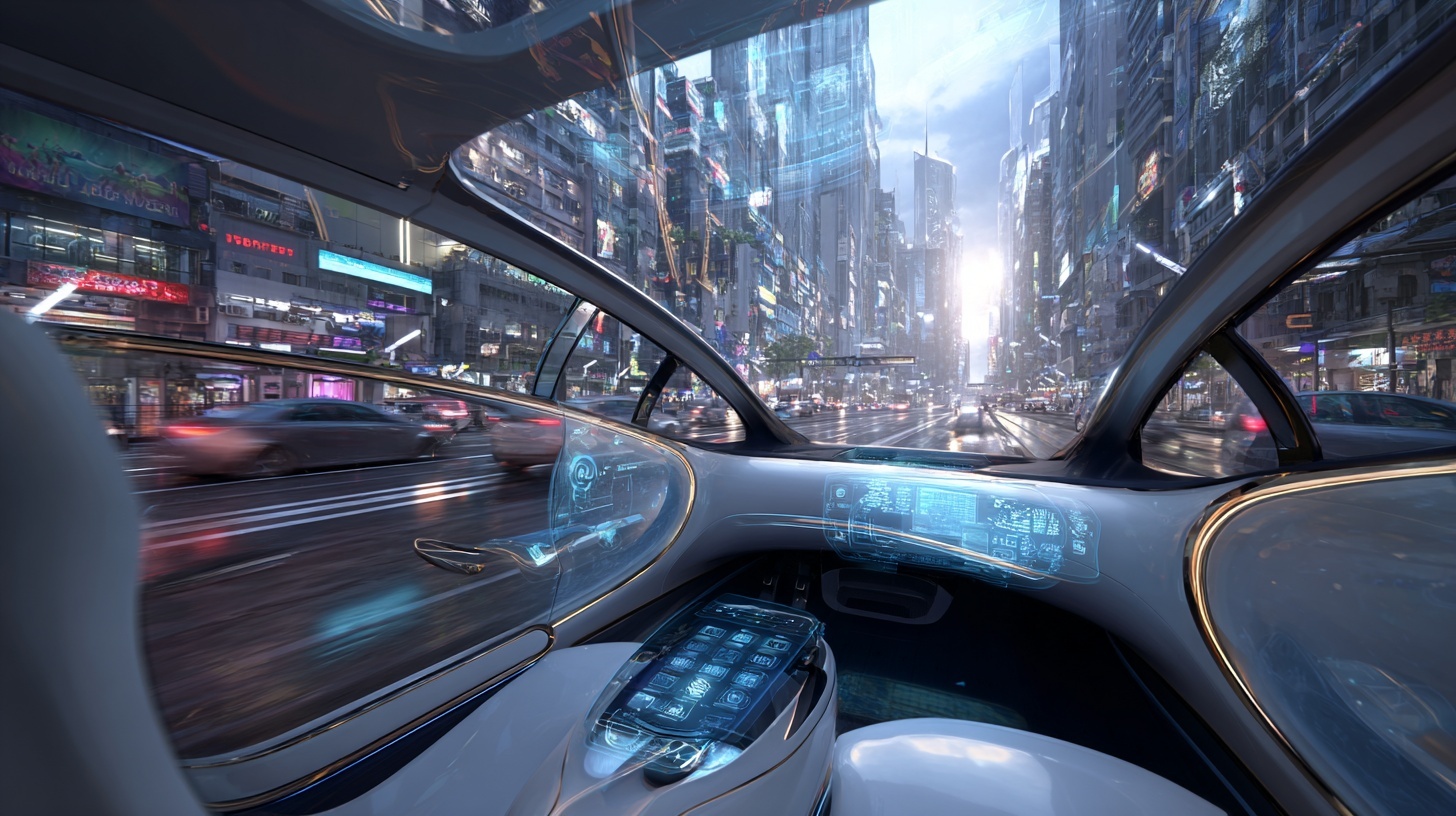By Futurist Thomas Frey
I’ll admit it: I got some things wrong about autonomous vehicles.
Back when I made my original predictions about the driverless car era, I was too optimistic about timelines and too conservative about what would actually change. I thought we’d have fully autonomous vehicles everywhere by 2020. I underestimated regulatory resistance. I didn’t anticipate how COVID would reshape urban transportation priorities.
But I also got some things right—and more importantly, I’ve learned what questions to ask differently. So here’s my revised take on 25 shocking predictions for the driverless car era, updated with what we’ve learned and what’s actually coming.
The Transition Will Be Messier Than Anyone Expects
1. The first driverless fatality will trigger a regulatory freeze lasting 2-3 years
This already happened, and I was right about the backlash but wrong about the duration. Every autonomous vehicle death gets scrutinized in ways that human-caused accidents never do. We accept 40,000+ traffic deaths annually from human drivers, but one death from an autonomous system becomes national news. The double standard will persist for at least another decade.
2. Insurance will fragment into incomprehensible complexity before it simplifies
I predicted insurance would get simpler. I was completely wrong. We’re entering an era where liability is split between vehicle manufacturers, software providers, sensor companies, mapping services, telecom providers, and individual owners. The first few years of widespread autonomous deployment will be a legal nightmare. Eventually AI will sort it out, but not before billions are spent on litigation.
3. Most personally owned cars will sit idle 23+ hours per day until 2035
I thought autonomous vehicles would immediately kill car ownership. Wrong. The transition from ownership to mobility-as-a-service is taking far longer because people overvalue ownership and undervalue convenience until they actually experience the alternative. Personal ownership will persist much longer than I predicted, even when it makes no economic sense.
Infrastructure Will Change in Unexpected Ways
4. Traffic lights will become obsolete in autonomous zones
I got this right conceptually but wrong about timeline. By 2040, cities will have autonomous-only zones where traffic lights are replaced by vehicle-to-vehicle coordination. Traffic will flow like murmurations of starlings—no stops, pure coordination. But mixed human-autonomous zones will need traffic signals for at least another 20 years.
5. Parking garages will be converted to warehouses, housing, and other uses
I predicted this, but I underestimated how fast and how varied the conversions would be. Urban parking garages represent prime real estate that will be repurposed once car ownership plummets. We’ll see the first wave of conversions starting by 2030: last-mile distribution warehouses for e-commerce on lower levels, micro-apartments and co-living spaces on upper levels, urban farms, data centers, maker spaces, and vertical entertainment venues. The transformation will accelerate dramatically after 2035 as garage owners realize their assets are becoming worthless and act preemptively.
6. Highway lanes will get 40% narrower for autonomous-only vehicles
Autonomous vehicles don’t need the safety margins human drivers require. Once highways transition to autonomous-only (likely by 2045), lanes will shrink from 12 feet to 7-8 feet, effectively increasing capacity by 40% without adding physical lanes. I was right about this, just wrong about when.
7. Gas stations will mostly disappear by 2040
I predicted this, but for the wrong reasons. I thought it would be because of electrification. That’s part of it. But the bigger factor is that autonomous electric vehicles charge while idle at their fleet depot or while parked. Individual refueling stops become unnecessary. The gas station as a destination dies completely.
Economic Disruptions Will Be Severe
8. 4-5 million driving jobs will disappear in the U.S. alone
I was right about this prediction, but wrong about the timeline. It’s happening slower than I expected, but it’s inevitable. Truck drivers, delivery drivers, taxi drivers, bus drivers—these jobs are already beginning to vanish. The economic dislocation will be massive, concentrated geographically, and inadequately addressed by retraining programs.
9. The trucking industry will split into two tiers
Long-haul autonomous trucking on highways will dominate by 2032. But last-mile delivery in complex urban environments will require human drivers far longer. We’ll have a two-tier system: high-paid last-mile specialists and eliminated long-haul drivers. I didn’t predict this split clearly enough originally.
10. Car dealerships will collapse faster than newspapers did
When you don’t own cars, you don’t need dealerships. Mobility-as-a-service providers buy direct from manufacturers. By 2038, we’ll see an 80% reduction in dealerships. The few survivors will be experiential showrooms in major cities. I predicted dealership decline but underestimated how complete the collapse would be.
11. Auto insurance will become a $50 billion industry instead of $300 billion
Fewer accidents, fewer owned vehicles, liability shifting to manufacturers—the insurance industry faces existential contraction. I was right about the direction but too conservative about the magnitude. By 2045, traditional auto insurance as we know it will be essentially gone.
Urban Design Will Transform
12. Curbside pickup/dropoff zones will replace 60% of street parking
I got this exactly right. Cities are already converting street parking to loading zones. By 2035, most urban streets will have dedicated autonomous vehicle pickup/dropoff zones, bike lanes, and pedestrian space. Static parking disappears from street level.
13. Suburban sprawl will reverse as commute time becomes productive
I was wrong about this. I thought autonomous vehicles would enable even more sprawl because commutes become work time. Instead, we’re seeing the opposite. People value proximity to urban amenities more than I expected. Autonomous vehicles enable density by making car ownership unnecessary, not sprawl by making commutes easier.
14. Cities will reclaim 30% of land currently dedicated to car infrastructure
Parking lots, parking garages, wide streets, traffic signals, road signage—autonomous vehicles need far less infrastructure. That land gets repurposed for housing, parks, and mixed-use development. I predicted this, but I underestimated political resistance to actually implementing it.
15. Drive-thrus will mostly disappear
Why sit in a drive-thru when your autonomous vehicle can pick up your food while you’re doing something else? The entire concept of drive-thru service becomes obsolete. I didn’t predict this originally, but it’s now obvious. Fast food real estate will transform completely by 2038.

Social and Cultural Shifts
16. Teenagers will stop getting driver’s licenses in meaningful numbers
This is already happening, but it will accelerate dramatically. By 2035, less than 30% of 18-year-olds will have driver’s licenses in major metro areas. The cultural significance of learning to drive—a rite of passage for generations—will simply evaporate. I predicted this trend but underestimated how quickly it would happen.
17. The steering wheel will become a retro luxury item
Manual driving will become like horseback riding—a hobby, not transportation. High-end vehicles will offer steering wheels as luxury features for enthusiasts. The rest of us will never touch one. I was right about this, though the timeline is longer than I thought.
18. “Drunk driving” will become a historical curiosity
When vehicles drive themselves, intoxication becomes irrelevant. An entire category of crime simply disappears. Along with it goes roadside sobriety tests, DUI lawyers, ignition interlocks, and thousands of preventable deaths. I predicted this correctly, though the legal and cultural adjustment is taking longer.
19. Road rage will be replaced by algorithm rage
I didn’t predict this originally, but it’s already emerging. People don’t get angry at other drivers—they get furious at their autonomous vehicle’s route choices, speed decisions, and caution. “Why won’t you just GO?” becomes the new road rage. The target shifts from humans to algorithms.
Environmental and Energy Implications
20. Total vehicle miles traveled will increase 40% even as vehicle ownership drops 60%
This was my most counterintuitive prediction, and I got it right. Autonomous vehicles are so convenient and cheap that people use them far more than they ever drove personal cars. Empty vehicles repositioning, circling, and deadheading add massive miles. The efficiency gains from electrification are partially offset by increased utilization.
21. Traffic congestion will initially get worse before it gets better
I underestimated this. The transition period—where human and autonomous vehicles share roads—creates more congestion, not less. Autonomous vehicles drive cautiously around unpredictable humans. It won’t improve until autonomous-only zones dominate, probably around 2040.
22. Electric vehicle adoption will happen faster than autonomous adoption
I got this exactly right. EVs are already mainstream while Level 5 autonomy remains elusive. The technologies are advancing on different timelines. By 2030, most new vehicles will be electric, but many will still have steering wheels and human drivers.
The Weird and Unexpected
23. Sleeping in your car during commutes will become normal
Long commutes become viable when you can sleep through them. We’ll see vehicles designed as mobile bedrooms for people who live 100+ miles from work but commute daily. I predicted this, but I didn’t anticipate the “sleeper pod” vehicle category that’s now emerging.
24. Vehicle interiors will fragment into dozens of specialized formats
Mobile offices, mobile gyms, mobile restaurants, mobile therapy rooms, mobile classrooms—once the vehicle drives itself, the interior can be anything. I predicted customization but underestimated how extreme the specialization would become. By 2040, the idea of a “standard” vehicle interior will seem quaint.
25. The first person to live entirely in autonomous vehicles will do so by 2028
This is my wildest prediction, and I’m sticking with it. Someone will figure out that living in an autonomous vehicle—moving between cities, never paying rent, showering at gyms—is cheaper than housing in expensive metros. “Vehicle nomads” will become a recognized lifestyle. I didn’t predict this originally, but it’s now inevitable.
Final Thoughts
I got some predictions wrong because I was too optimistic about technology timelines and too pessimistic about regulatory resistance. I underestimated how long humans would cling to ownership and overestimated how quickly infrastructure would adapt.
But the core insight remains valid: autonomous vehicles will transform society far more radically than the internet did. They’ll reshape cities, destroy industries, eliminate jobs, change how we live, and create opportunities we can’t yet imagine.
The driverless car era is coming. It’s just coming slower, messier, and stranger than any of us predicted.
And that’s probably the most accurate prediction of all.
Related Stories:


